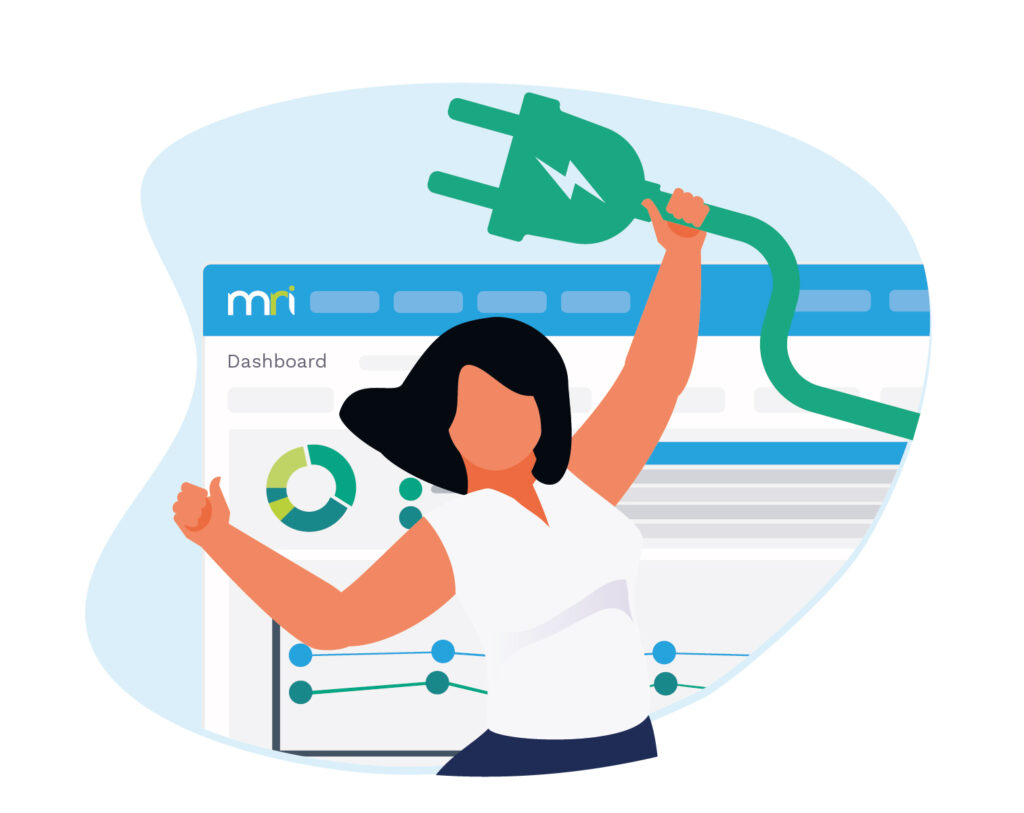What is smart energy management?
Smart energy management is transforming how properties manage and optimise energy consumption. By using advanced technologies like IoT, sensors and analytics, it helps property owners reduce costs, improve efficiency and achieve sustainability goals. In this post, we explore what is smart energy management, the benefits and the value of implementing smarter energy management systems.

Understanding smart energy management basics
Smarter energy management goes beyond simple monitoring to create actionable insights and automated processes. These systems use advanced tools to track energy consumption, identify waste and ensure efficient use of resources. By integrating smart technologies, property managers can reduce energy costs and improve operational efficiency.
- Inefficient energy use: Running HVAC systems in unoccupied rooms.
- Peak demand charges: Unnecessary energy use during high-rate hours.
- Manual adjustments: Reliance on staff for energy monitoring and control.
What defines smart energy management?
Smarter energy management uses technology to monitor and optimise energy consumption in real-time. It provides insights into usage patterns, detects inefficiencies and suggests actionable improvements. Unlike traditional methods, it automates energy decisions for consistent and efficient results.
How does it differ from traditional energy management?
Traditional energy management relies on manual monitoring and static systems which can miss inefficiencies or waste. Smarter energy management uses automated controls, predictive analytics and IoT devices to streamline energy use. This leads to smarter decision-making and better resource allocation.
Components of smart energy systems
Smart energy systems are composed of several key technologies and tools. These include IoT devices, smart meters and software platforms that work together to deliver actionable insights. Each component plays a unique role in ensuring energy is used efficiently and effectively.
What technologies make up smart energy management?
Key technologies include IoT devices, cloud platforms and advanced energy analysis software. IoT devices like sensors and smart meters collect data, while cloud-based systems analyse it in real-time. These technologies work together to deliver precise control and actionable insights.
- IoT devices: Smart thermostats, motion detectors and energy plugs.
- Energy management platforms: Tools like MRI Software’s energy analysis software to centralise data and analytics.
- Smart meters: Devices providing real-time consumption data for individual apartments or entire buildings.
- Renewable energy systems: Solar panels or wind turbines integrated into the grid.
How do smart meters and sensors work together?
Smart meters and sensors are critical for accurate energy monitoring. Sensors track variables like temperature, humidity and occupancy, while smart meters record consumption. Together, they provide a comprehensive view of energy usage, enabling smarter, more efficient management.
- Sensors track variables like temperature, humidity and occupancy.
- Meters record and report the total energy consumed in real-time.
- Data from both devices integrates into a platform for analysis and actionable recommendations.
Benefits of smart energy management
Implementing smarter energy management offers significant financial and operational advantages. By providing actionable insights, it helps businesses cut costs while aligning with sustainability goals. The benefits of energy management make it a must-have solution for property managers and landlords.
What cost savings can businesses expect?
Smarter energy management is a proven way to significantly lower utility bills. Studies show that businesses implementing energy management systems often see cost reductions of up to 20% within the first year. For instance, a property management company could reduce its annual energy expenses by optimising HVAC schedules and switching to energy-efficient lighting.
- Automating HVAC systems to run only when needed.
- Using LED lights instead of incandescent bulbs.
- Scheduling high-energy appliances during off-peak hours.
How does it improve operational efficiency?
Efficiency improves dramatically with automation and data-driven insights. For example, smart HVAC systems can automatically adjust based on occupancy, ensuring energy is used only when needed. Real-time updates allow property managers to address issues quickly, such as detecting and resolving energy spikes caused by malfunctioning equipment.
- Reduces equipment wear-and-tear through optimised usage.
- Minimises manual monitoring with automated updates and reports.
- Speeds up issue resolution with system alerts for malfunctions.
Implementing smart energy solutions
Transitioning to smarter energy management requires careful planning and execution. By following a structured approach, businesses can adopt these systems seamlessly and maximise their benefits. The steps involved range from evaluating energy needs to full-scale implementation.
What steps are needed to adopt smart energy management?
To implement energy management, you’ll need to assess your property’s energy consumption and inefficiencies. From there, select a suitable energy management system tailored to your property’s size and requirements. Training your team on how to use the system is crucial for long-term success.
- Step 1: Conduct an energy audit.
- Step 2: Select the right system based on goals and property needs.
- Step 3: Train your team and ensure proper system integration.
- Step 4: Install IoT devices for real-time monitoring and control.
- Step 5: Continuously monitor and refine system settings.
How can businesses transition to smart systems?
Transitioning to smart systems involves a phased approach. Begin with a pilot programme to test the system’s effectiveness in a small area. Once proven, scale the system across your entire property, integrating it with existing operations for seamless adoption.
Data analytics in smart energy management
Data analytics is at the heart of energy management systems. It transforms raw data into meaningful insights that can help property managers make informed decisions. These insights enable better control, reduced waste and improved energy performance.
How is energy data collected and analysed?
Energy data is collected through IoT devices like sensors and smart meters. These devices gather information about consumption patterns, peak usage times and inefficiencies. Advanced energy analysis software processes this data, offering actionable insights to optimise performance.
What insights can smart energy analytics provide?
Analytics can reveal trends such as energy spikes during certain hours or waste in unoccupied areas. For example, you might discover that reducing HVAC use by 10% during off-peak hours could save thousands annually. These insights help property managers make informed energy decisions.
FAQs
Contact MRI Software
To learn more about how your organisation could benefit from smart energy management, contact MRI Software today on +44 (0)20 3861 7100.
Empowering a Greener NHS: Why smart energy monitoring is key to decarbonisation and better patient care
Byline by Nicholas Hughes, overseeing Healthcare Solutions at MRI Software The NHS’s commitment to achieving net zero emissions is entering a decisive new phase. With NHS England requiring all Trusts and Integrated Care Boards (ICBs) to submit refres…

